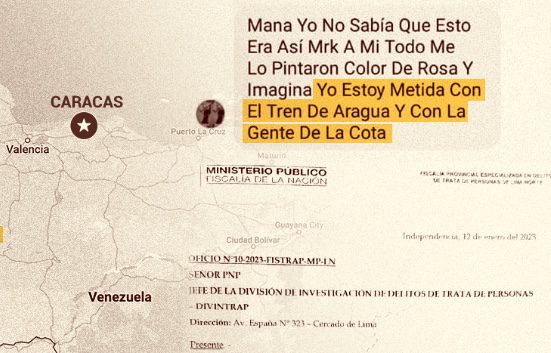
Venezuelan Women at Risk From Expanding Trafficking Rings
On November 29, 2022, the Monagas family heard from Lismar Monagas for the last time. Since then, the family has lived in uncertainty about what has happened to Lismar, a 21-year-old Venezuelan woman who, at the time, was living in Peru and being controlled by a group with ties to human trafficking.
Lismar left Venezuela on October 16, 2021, without any warning. Her grandfather, Leonel Monagas, learned afterward that Lismar, who he had raised as a daughter in the neighborhood of El Cementerio, a working-class sector located in the west of Caracas, had left the country irregularly, without a passport, by bus.
It was the first time Lismar had left Venezuela. She was happy and hopeful. She documented her journey through Colombia and Ecuador in videos and with video calls to her family. Leonel, however, feared the worst. And he was right: unbeknownst to her, Lismar had been captured by a human trafficking network.
“The first few days she told me that they gave her things and clothes, and I told her that this was dangerous, and that they were going to charge her because I suspected why they had taken her,” Leonel said.
Hundreds of Venezuelan women have fallen victim to human trafficking networks in recent years. But Lismar’s story shows how these networks are adapting new strategies, like increasingly recruiting victims beyond the Colombian border and increasingly using women to recruit.
